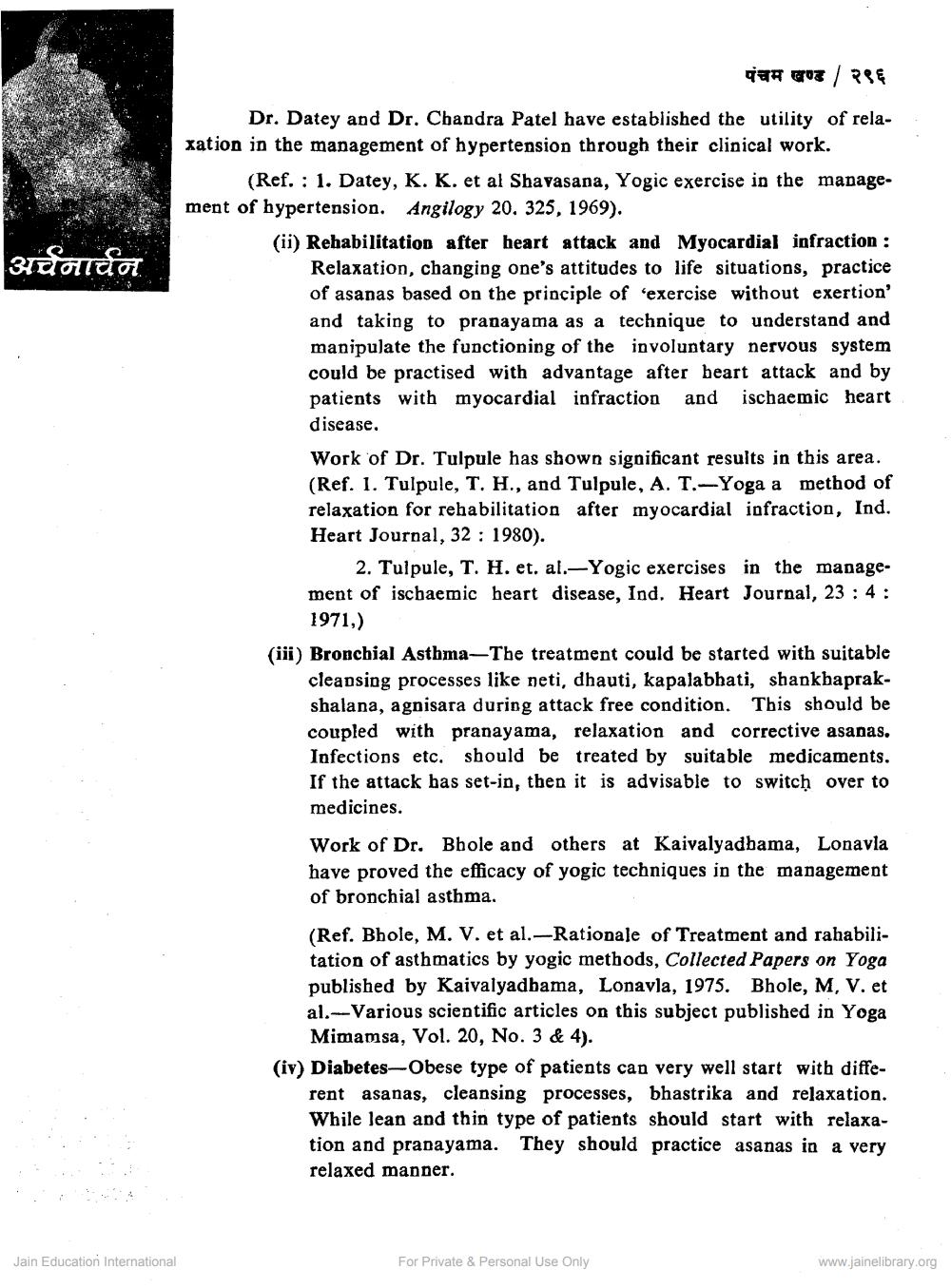Book Title: Therapeuatic Application of Yoga Teachniques Author(s): M V Bhole Publisher: Z_Umravkunvarji_Diksha_Swarna_Jayanti_Smruti_Granth_012035.pdf View full book textPage 6
________________ TASR पंचम खण्ड / २९६ अर्चनार्चन Dr. Datey and Dr. Chandra Patel have established the utility of relaxation in the management of hypertension through their clinical work. (Ref. : 1. Datey, K. K. et al Shavasana, Yogic exercise in the management of hypertension. Angilogy 20, 325, 1969). (ii) Rehabilitation after heart attack and Myocardial infraction : Relaxation, changing one's attitudes to life situations, practice of asanas based on the principle of 'exercise without exertion' and taking to pranayama as a technique to understand and manipulate the functioning of the involuntary nervous system could be practised with advantage after beart attack and by patients with myocardial infraction and ischaemic heart disease. Work of Dr. Tulpule has shown significant results in this area. (Ref. 1. Tulpule, T. H., and Tulpule, A. T.-Yoga a method of relaxation for rehabilitation after myocardial infraction, Ind. Heart Journal, 32 : 1980). 2. Tulpule, T. H. et. al.-Yogic exercises in the management of ischaemic heart disease, Ind. Heart Journal, 23:4: 1971,) (iii) Bronchial Asthma—The treatment could be started with suitable cleansing processes like neti, dhauti, kapalabhati, shankbaprakshalana, agnisara during attack free condition. This should be coupled with pranayama, relaxation and corrective asanas. Infections etc. should be treated by suitable medicaments. If the attack has set-in, then it is advisable to switch over to medicines. Work of Dr. Bhole and others at Kaivalyadbama, Lonavla have proved the efficacy of yogic techniques in the management of bronchial asthma. (Ref. Bhole, M. V. et al. --Rationale of Treatment and rahabilitation of asthmatics by yogic methods, Collected Papers on Yoga published by Kaivalyadbama, Lonavla, 1975. Bhole, M, V. et al.-Various scientific articles on this subject published in Yoga Mimamsa, Vol. 20, No. 3 & 4). (iv) Diabetes-Obese type of patients can very well start with diffe rent asanas, cleansing processes, bhastrika and relaxation. While lean and thin type of patients should start with relaxation and pranayama. They should practice asanas in a very relaxed manner. Jain Education International For Private & Personal Use Only www.jainelibrary.orgPage Navigation
1 ... 4 5 6 7 8 9 10 11
